Connection diagram
Underneath you find a visual representation of how the streaming station in Salen is connected together.
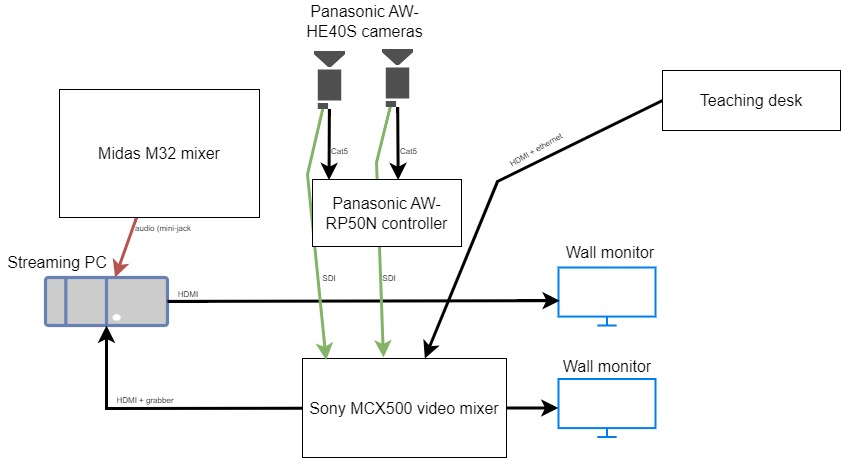
Equipment
The streaming station includes:
-
2x wall-mounted Panasonic AW-HE40S cameras
- Panasonic AW-RP50N camera controller
- Sony MCX-500 video mixer
- 2x wall-mounted TV monitors.
- Stationary UiO PC
- HDMI - USB video grabber
The Panasonic Cameras with Controller
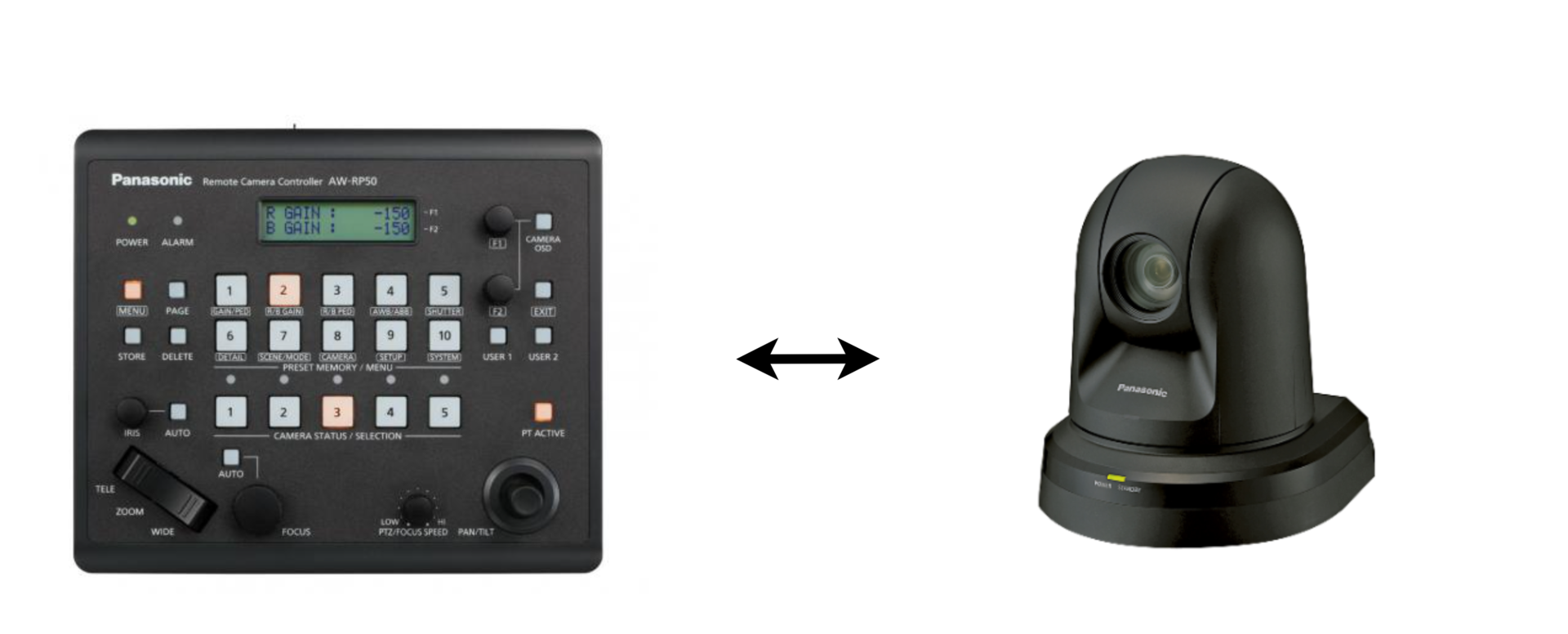
The Panasonic AW-HE40S cameras are remote-controlled by the Panasonic AW-RP50N camera controller via IP.
It is important that the cameras and the controller are connected to the correct physical ports. The Panasonic cameras should be connected to the controller's "TO PAN/TILT HEAD" connectors via their RS-422 ports.
Turning the controller on/off
Now, power on the controller. Ensure that the LEDs above the "CAMERA STATUS/SELECTION" buttons are either orange or green.

If there is no light above these buttons, we must set the correct IP configuration for the camera inputs on the controller. We do this by:
- Selecting the desired camera on the "CAMERA STATUS/SELECTION" panel
- Pressing menu
- Pressing button nr.10 called "SYSTEM"
- Navigating to the "CAMERA CTL" in the UI via the F1 knob (scroll and press).
- Navigating to the "1.CAM" section and selecting "serial" using the F2 knob (scroll and press).
When the correct IP configuration has been made, the LEDs above the "CAMERA STATUS/SELECTION" buttons should be either orange or green.
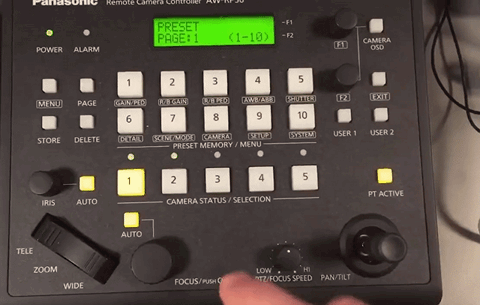
Turning the cameras on/off
Now it's time to turn the cameras on. Simply press and hold the desired "CAMERA STATUS/SELECTION" button until "Cam1<AW-HE40" is visible in the UI. Then, while holding the button, use the F2 knob to scroll to "ON" and press the F2 knob to confirm. The LEDs should now turn from orange to green, indicating a successful connection.

The Sony MCX500 Video Mixer
We use the Sony MCX500 mixer to preview and mix between video feeds during an event, and finally to broadcast that mix to a computer for streaming or recording purposes.

Inputs
The Panasonic cameras are connected via SDI to inputs 1 and 2 on the Sony mixer. To configure the input channels on the mixer, simply press the "assign" button and navigate "video input select" row B. Then, choose the desired input ports for each AV channel in the mixer UI.
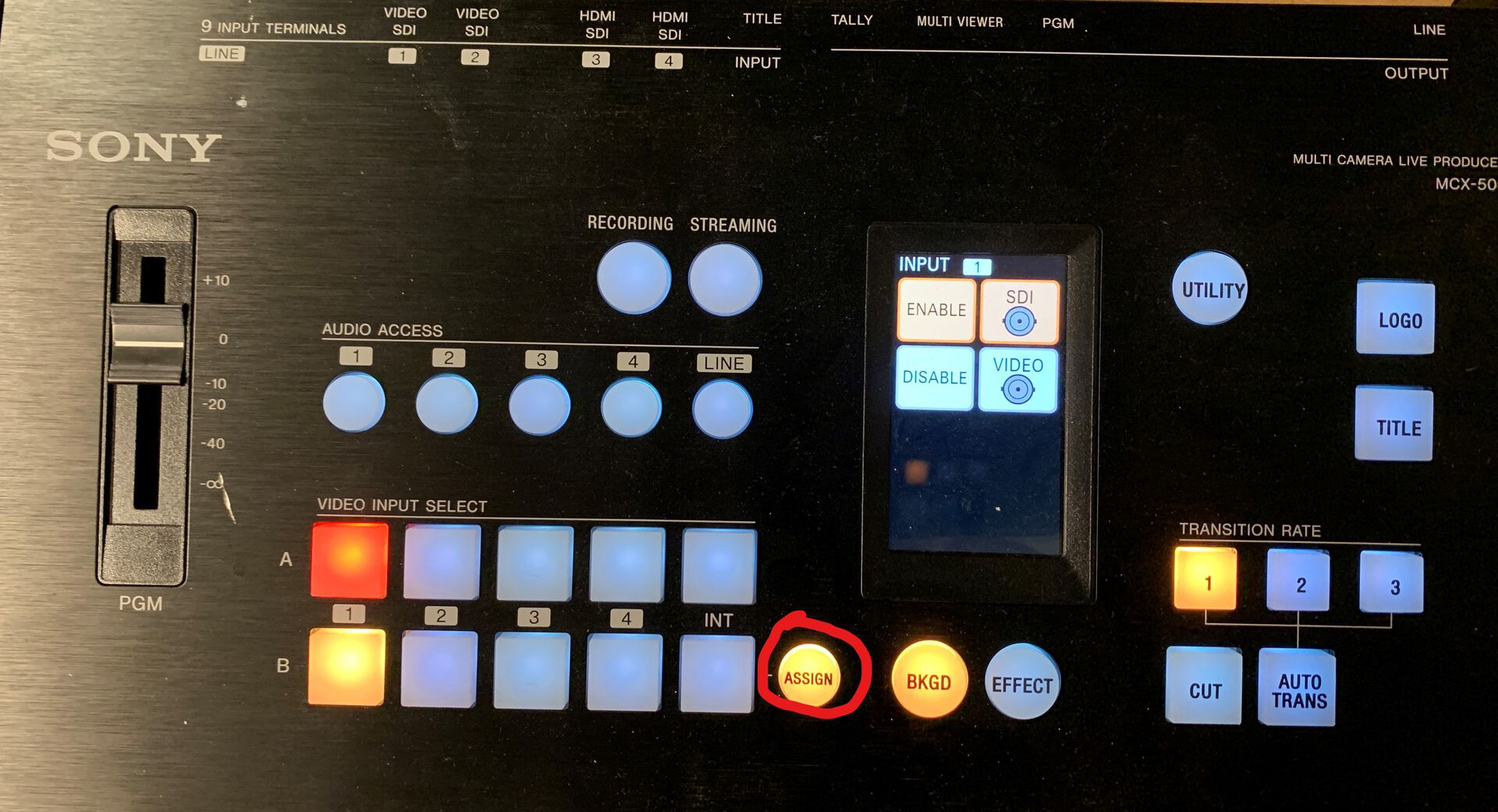
Outputs
The top wall-mounted monitor is connected to the mixer for previewing purposes. The monitor is connected to the "MULTI-VIEWER" output, which gives us a visual preview of our camera feeds and current output to the streaming computer (PGM). The mixer is connected to the stationary UiO streaming PC via the "PGM" HDMI port.
(new picture of the monitor)
Advanced
For more advanced configurations, like custom internal routing, connect your laptop/PC to the "PC UI" port. See the hardware manual for more documentation on this procedure.
HDMI From The Teaching Desk
Whatever image/screen is sent to the main projector in Salen from the teaching desk is also available on the Sony MCX500 video mixer at the streaming station. This way, presentation content can be streamed separately from the camera feeds, ensuring a better quality streaming experience.
The teaching desk HDMI feed is provided by the output of the HDMI Scaler located inside the teaching desk. The HDMI output signal is then extended through a pair of HDMI-to-ethernet converters to the streaming station in the back.

Streaming Audio
The easiest solution for capturing audio for a live stream in Salen is to connect an output bus from the Midas M32 mixer straight to the streaming computer's "microphone" input via an XLR to a 3.5mm jack cable.
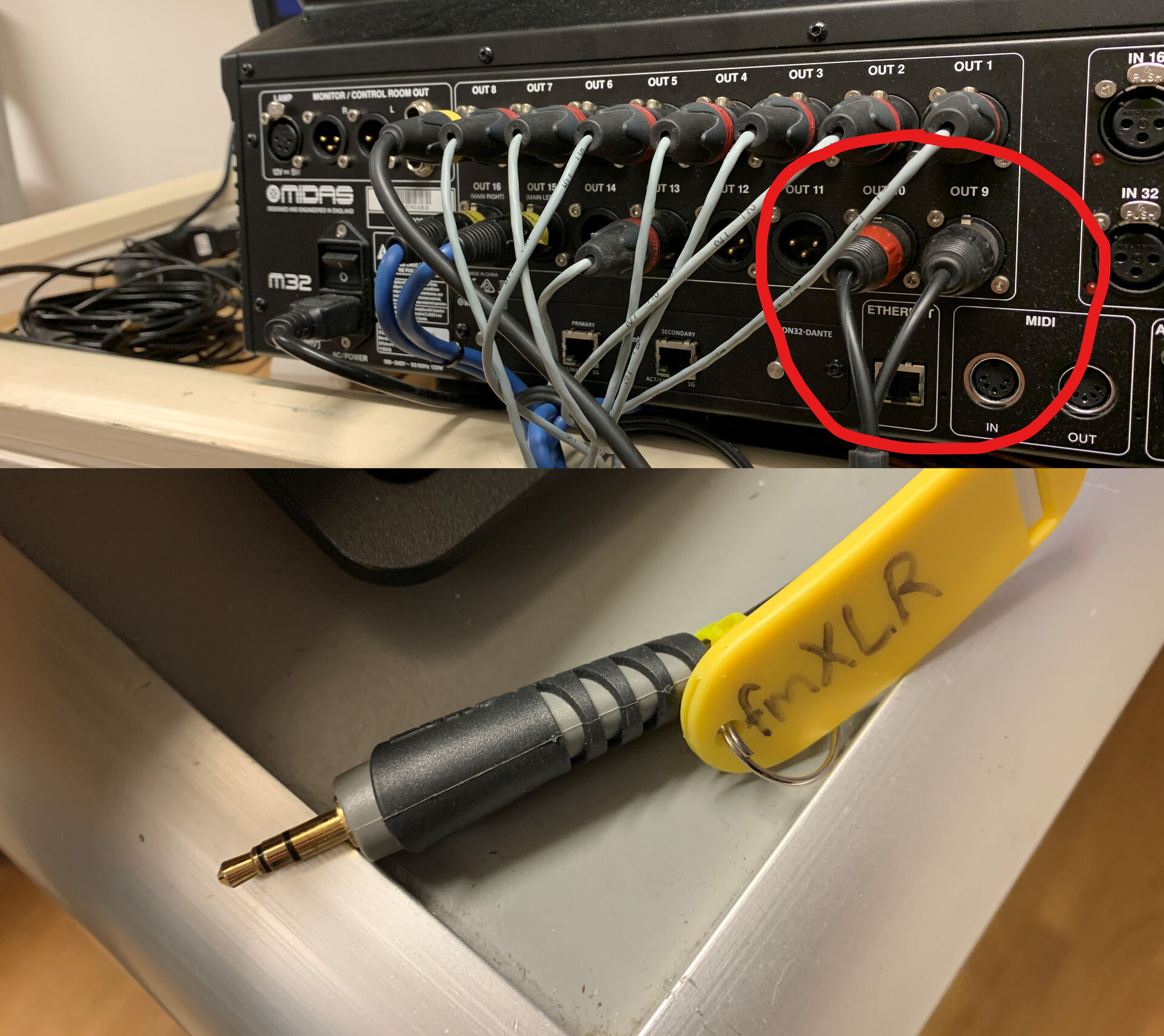
Then, ensure that the "system microphone" is selected as the sound source in the streaming software. From here, you can monitor the levels.
It is also possible to use the Sony MCX500 to capture audio for a live stream. To do this, connect an output bus from the Midas M32 mixer to the dedicated XLR audio inputs located on the back of the Sony MCX500 video mixer via XLR cables.
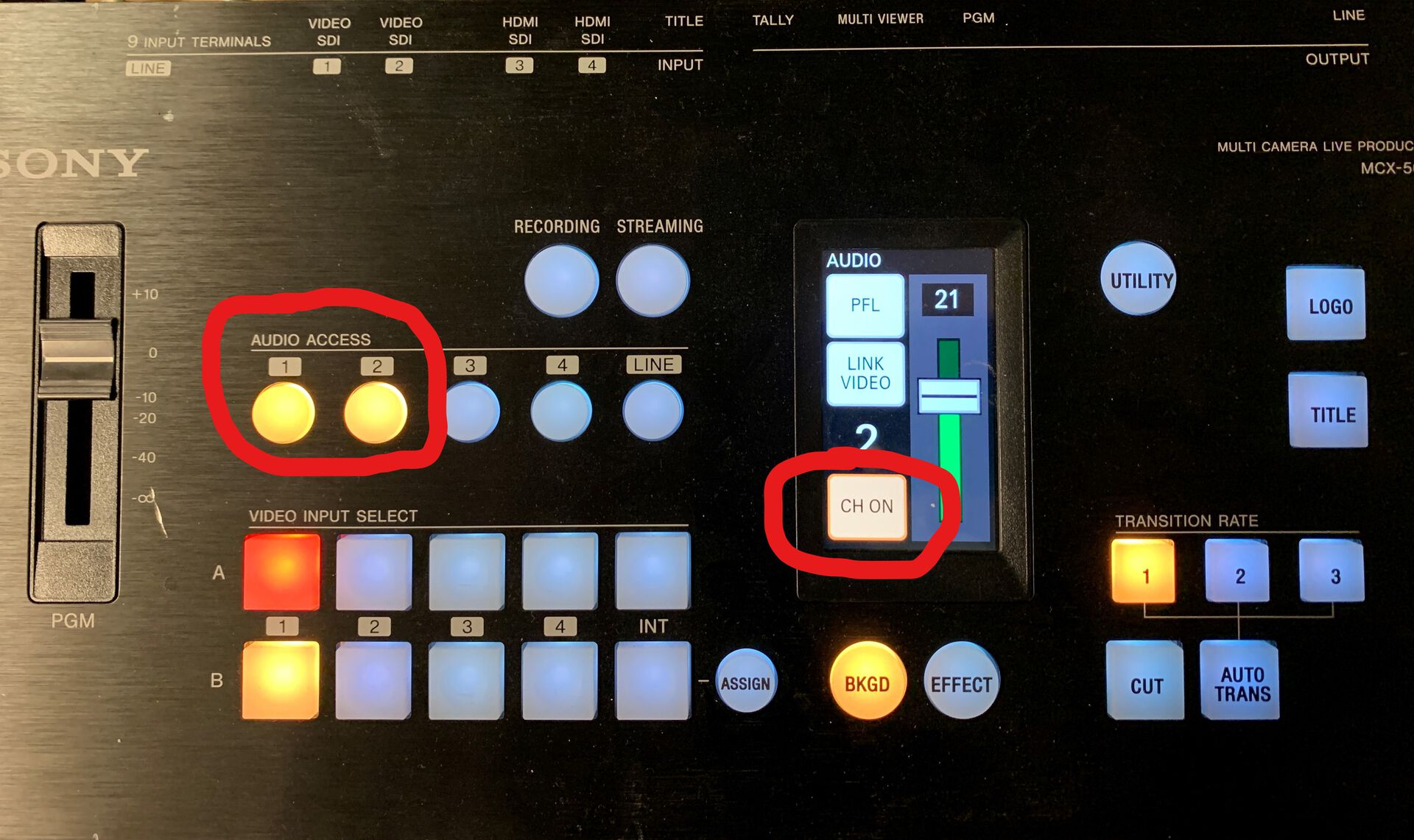
Second, press the "audio access" channel buttons and enable them through the touchpad display. Adjust the volume accordingly.
Finally, ensure that the MCX500 is selected as the sound source in the streaming software. From here, you can monitor the levels.
Streaming Content to YouTube With OBS
On the streaming computer, log into the desired YouTube account. From here, schedule or start a video stream and copy the assigned Stream Key (strømmenøkkel).
Now, in OBS, go to "Settings -> Stream" and enter the stream key or connect your YouTube account. (The specifics of this step might change in later versions of OBS and YouTube, but the principle is the same).
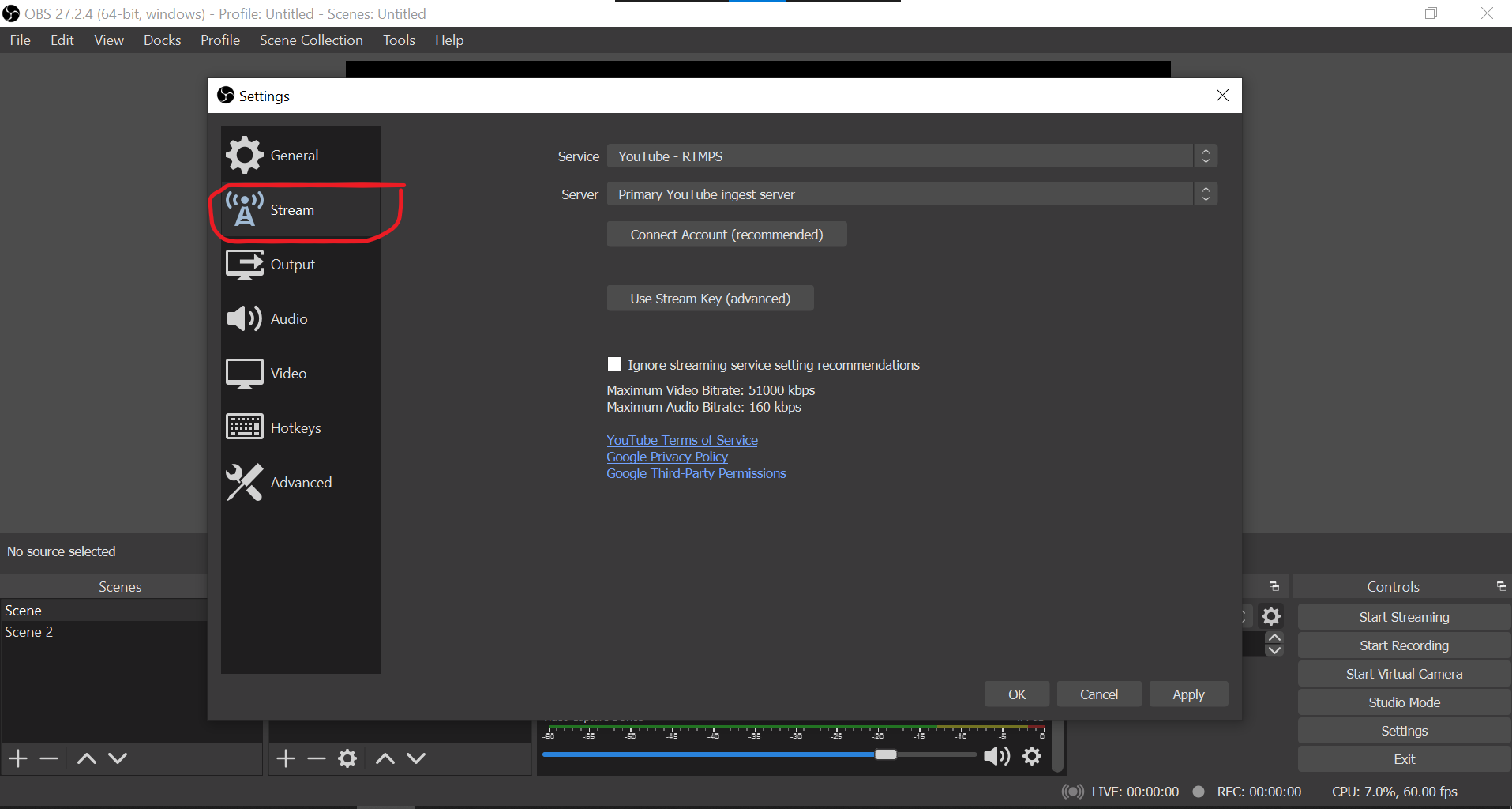
With this, you should have a connection between YouTube and OBS. Remember to monitor audio levels, and select a suitable resolution and Bitrate for your stream. More info on streaming with YouTube and OBS can be found online.
